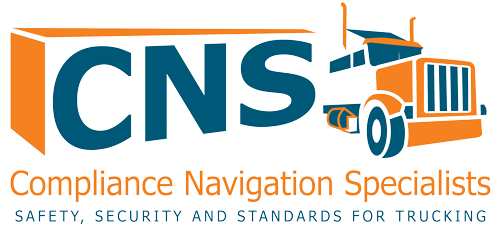Benchmarking in Trucking: A Strategic Plan to Gain Insight, Improve Performance, and Set Realistic Goals

In today’s freight market—where profit margins are tight, costs are volatile, and efficiency is king—benchmarking is one of the most powerful tools available to business owners, fleet managers, and safety directors. When properly implemented, benchmarking can uncover underperforming areas, guide operational strategy, and set clear, realistic performance goals for improvement.
But benchmarking isn’t just about comparing numbers. It’s a strategic, repeatable process that reveals what’s possible and how to get there.
In this article, we’ll walk through a detailed business management plan to use benchmarking, complete with real-world examples, staffing recommendations, and a breakdown of the KPIs and action steps you need to monitor your fleet’s performance and move your business forward.
Let’s go!
What is Benchmarking and Why Should Fleets Use It?
Benchmarking is the process of comparing your internal performance metrics—such as cost per mile, idle time, or driver turnover—against industry standards or peer fleets. It helps you identify where you’re excelling and where you’re falling behind.
“Benchmarking gave us the hard data we needed to rethink our maintenance strategy. We didn’t realize how much we were overspending on tires until we compared our costs per mile with similar-sized fleets,”
— Kyle M., Operations Manager
DOWNLOAD this excel spreadsheet to help get you started.
Step 1: Identify Key Focus Areas
Before diving into spreadsheets and dashboards, decide which performance areas matter most. For most trucking companies, benchmarking should focus on:
- Cost-per-mile (CPM) by category (fuel, tires, maintenance, insurance, etc.)
- Operational efficiency (idle time, driver behavior, asset utilization)
- Human capital metrics (driver turnover, payroll cost per mile)
- Regulatory performance (maintenance intervals, inspection scores)
Step 2: Collect Internal Data
Start with a deep dive into your own numbers.
Data to Collect:
| Metric | Source | Timeframe |
| Fuel costs, maintenance costs, insurance | Accounting software or ERP | Last 12 months |
| Driver idle time, asset usage | ELD or telematics systems | Daily/monthly |
| Maintenance intervals | Shop management system or spreadsheets | Per unit, last year |
| Driver turnover | HR records | Quarterly/Annually |
| Payroll by role | Accounting/HR | Monthly |
Pro Tip: Assign a dedicated Operations Analyst or Fleet Performance Manager to lead the data collection process and ensure consistency. If your company doesn’t have this role, a safety manager or assistant fleet manager can fill the gap, with help from the accounting and HR departments.
Step 3: Compare Against Industry Benchmarks
Once you know your numbers, you need something to measure them against. Use industry studies and reports from sources like:
- ATRI (American Transportation Research Institute)
- American Trucking Associations (ATA)
- FMCSA’s SMS database
- Your insurance company’s risk control benchmarks
- Peer benchmarking groups (NPTC, TCA Best Practices Groups, etc.)
Example:
According to ATRI’s most recent Operational Costs of Trucking report, average line-item costs per mile were:
- Fuel: $0.61
- Driver wages: $0.72
- Tires: $0.04
- Maintenance: $0.16
- Insurance: $0.08
Compare these to your fleet’s numbers to quickly spot problem areas.
“We realized our maintenance CPM was $0.23—nearly 40% higher than the benchmark. Digging in, we discovered we were over-servicing some assets and missing others altogether.”
— Amanda R., Fleet Maintenance Coordinator
Step 4: Identify Underperformance and Outliers
Now it’s time for the insights. Compare your internal metrics to benchmarks and look for:
- Underperforming assets – Are a few trucks consistently showing more downtime or higher repair costs?
- High idle time – Are certain drivers idling significantly more than others?
- Overpaid roles or underutilized staff – Does payroll reflect output?
Create an Outlier Report. This report flags the top 10% and bottom 10% performers in each category—assets, drivers, terminals, etc.
Step 5: Set KPIs and Improvement Goals
Use SMART goals—Specific, Measurable, Achievable, Relevant, and Time-bound—to set improvement targets.
Recommended KPIs and Goals:
| Category | KPI | Goal |
| Fuel Efficiency | Fuel CPM | ≤ $0.60 |
| Idle Time | % of engine-on time | ≤ 8% |
| Maintenance | PM Compliance | 100% on-time |
| Driver Turnover | Annual turnover rate | ≤ 35% |
| Asset Utilization | % of active use | ≥ 85% |
| Payroll | Payroll CPM | Within 10% of benchmark |
Step 6: Assign Roles and Responsibilities
Benchmarking is not a one-person job. Here’s how to staff it:
| Role | Responsibilities |
| Operations Analyst / Data Manager | Collects, cleans, and compares data |
| Safety Manager | Monitors driver behavior, idle time, inspections |
| Maintenance Manager | Tracks PMs, evaluates cost-per-asset |
| HR Manager | Tracks driver turnover, payroll, hiring trends |
| Fleet Manager | Oversees asset utilization, dispatch efficiency |
| Executive Sponsor (COO/VP Ops) | Champions the initiative, ensures accountability |
Step 7: Implement Tools and Systems
You don’t need fancy tech to start benchmarking, but software can help streamline the process.
Suggested Tools:
- Telematics/ELD Software: Pedigree Technologies, Geotab, Motive
- Maintenance Software: Fleetio, TMW, Whip Around
- HR/Payroll: ADP, QuickBooks, BambooHR
- BI Dashboards: Power BI, Tableau, Excel
- Benchmarking Services: TCA Best Practice Groups, NPTC Fleet Benchmarking
- Compliance Management Software: CNS Connects
Step 8: Review and Adjust Quarterly
Hold monthly or quarterly review meetings with key department heads to:
- Analyze performance trends
- Review goal progress
- Adjust KPIs based on industry changes
- Identify process breakdowns
Create a monthly executive summary for leadership that includes visual performance dashboards, outlier highlights, and action items.
“We track our KPIs in a shared dashboard and color-code progress—green for on track, yellow for watchlist, red for action required. It keeps everyone aligned.”
— Brian T., VP of Operations
Step 9: Drive Continuous Improvement
Benchmarking should become part of your company culture. Use results to:
- Recognize top-performing drivers or departments
- Justify investments in training or technology
- Inform rate negotiations or contract bids
- Reduce insurance premiums by demonstrating improved risk performance
Final Thoughts: Benchmarking Is Your Compass
Benchmarking isn’t just a spreadsheet exercise. It’s a strategic compass that helps trucking companies navigate uncertainty, improve profitability, and build a performance-driven culture.
The fleets that survive and grow in today’s challenging freight environment are the ones that know their numbers, track their goals, and continuously improve.
By implementing this detailed benchmarking plan—complete with data analysis, KPIs, accountability roles, and regular reviews—you’ll be on the path to stronger performance and a more resilient business.
How CNS Can Help
At Compliance Navigation Specialists (CNS), we partner with small and mid-sized fleets to reduce compliance risk, manage costs, and improve safety. Our services include:
- Driver qualification and retention support
- Fleet maintenance programs
- ELD and telematics solutions
- HR and driver support
- Outsourced safety management
Our PSM Custom Program will allow you to choose multiple services that you would benefit from without paying for each service a la carte.
If you need help or have any questions, contact us at 888.260.9448 or info@cnsprotects.com and we would be glad to help.
Questions about DOT Compliance, Licensing, Audits, Programs, etc.?
Our DOT Specialists are here to help!
What are you searching for?
Is DOT Compliance your Top Priority?
Our DOT Compliance Programs ensure it is your top priority and keeps your business running.
Related Services
Subscribe to our Monthly Newsletter
Receive the latest transportation and trucking industry information about FMCSA and DOT Audits, Regulations, etc.
Related news
Trucking News
Get the latest trucking news on DOT Compliance, Licensing, Audits, and more!

Pennsylvania’s Non-Domiciled CDL Program is Changing: What Happened, What Comes Next, and What Carriers Should Expect
Pennsylvania’s entire non-domiciled CDL system is heading for a major overhaul that is being pushed by federal pressure, public safety concerns, and politics. Here’s what

How Trucking Companies Can Survive (and Thrive) Amid High Costs and Low Rates
The trucking industry is facing one of its most turbulent periods in recent memory. According to the 2025 Operational Costs of Trucking Report from the
